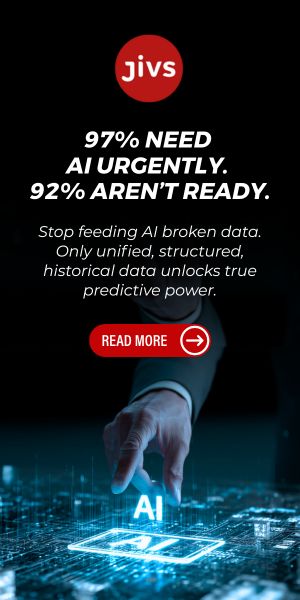Artificial intelligence is a transformative technology reshaping every industry with which it intersects, especially enterprise tech. The sheer impact that AI has had on the world is reflected in the one percent boost to global labor productivity which is now predicted to deliver year-on-year.
Similarly, 79 percent of respondents to McKinsey’s 2023 ‘Global Survey on AI’ say they’ve had at least some exposure to generative AI and 40 percent say their organizations will increase investment in AI overall. It’s the biggest game-changer since the advent of the microprocessor and the birth of the internet.
Not all AI is created equal, however.
If you mention the term artificial intelligence, many immediately associate it with the GenAI superstars like ChatGPT. In fact, this is just one type of a growing and differentiated set of technologies. As different use cases are conceived, new audiences identified and different data-sets utilized, new AI variants are developed to address the ongoing changes.
For organizations seeking to drive business transformation, enterprise AI arguably provides a greater lever for change than its consumer AI counterparts – particularly when enhanced by the right tool.
Consumer AI vs Enterprise AI
There are fundamental differences between the consumer and enterprise AI models. Consumer AI tends to focus on delivery of solutions for individuals, drawing upon vast (mostly public) datasets to create or analyze content – such as ChatGPT, Perplexity AI, DALL-E or Midjourney. By contrast, enterprise AI involves a strategic deployment of artificial intelligence technologies – trained and supported by proprietary and sensitive business data – to optimize business processes, decision making and productivity.
Enterprise AI addresses pressing business challenges, delivering a high return on investment for customers by solving previously intractable problems or eliminating issues much more cost-effectively and rapidly than before. For example, an enterprise AI could be tasked with analyzing supply chain data to optimize logistics processes or with activating intelligent process automations.
It may use many of the same techniques such as machine learning, predictive analytics or natural language processing (NLP), but enterprise AI binds them directly to achieving specific business goals.
When governed by clear business rules and accurate, comprehensive process intelligence, enterprise AI safeguards data privacy, ensures process compliance and avoids AI hallucinations.
Powering enterprise AI with process intelligence
The impact of enterprise AI on business processes is a direct function of the data on which it is trained and fed. Insights provided by specific tools, like Process Intelligence, could help unlock the full value of AI software.
Process Intelligence is the integration of detailed process data, gained from process mining, with standardized process knowledge. Process Intelligence enables AI to understand an organization’s end-to-end processes. Data gathered from Process Intelligence can be observed through the Process Intelligence Graph, a system-agnostic, digital twin of the business, providing a single-process intelligence layer that supports improvements, automation and system transformation across all applications.
The Process Intelligence Graph provides enterprise AI with real-time, data-driven insights into how a business operates, its governance rules and how processes interact, combined with process best practices derived from thousands of Celonis customer deployments.
This means that not only does the AI understand how the business operates and potential value opportunities, it can also model the impact of process changes accurately and react quickly and effectively to anomalies with automated countermeasures. In short, process intelligence is an enablement layer for maximizing the ROI of AI solutions.
With an understanding of how work flows through an organization, the Process Copilot aims to make process analysis faster, more intuitive and more collaborative. Using natural language processing (NLP) and a conversational interface, it enables all team members (not just process specialists) to interrogate process data in everyday language. This means all users are empowered to identify and activate value opportunities hidden in business processes.
Finally, the Process Intelligence Graph also provides AI explainability and traceability – helpingbusiness users to understand the rationale behind automated inferences and decisions. This is a major step forward for transparent AI governance and could help allay fears around so-called ‘black box’ AI.
Preventing AI hallucinations
Using Process Intelligence also helps guard against known challenges in generative AI solutions – for example, hallucinations. These occur when an AI generates misleading results, creates plausible but false information or draws incorrect inferences from data patterns or inputs. For example, an AI might erroneously interpret legitimate online activities as potentially fraudulent and lock customers out of their accounts.
The primary causes of AI hallucinations include insufficient or biased training data, a lack of grounding in accurate knowledge and data or an overreliance on GenAI’s capabilities to fill in the gaps left by the above.
Process Intelligence – and specifically the Process Intelligence Graph – can help prevent such hallucinations. By grounding the enterprise AI with detailed process data and intelligence through retrieval augmented generation, the system has the comprehensive, accurate data it needs plus a structured framework of how to use it.
Pick your AI path carefully
Where AI is concerned, levels of commercial FOMO are at a fever pitch. In this technological goldrush, it is tempting to jump straight to putting a team together and piecing together GenAI solutions in-house.
Before committing to this path, it’s vital that business leaders consider if their future AI-driven plans reflect their company’s technical capabilities and resources – can your hardware take the added strain of AI tech? GenAI doesn’t work well with messy data, so your organization will have to clean and sort through potential gigabytes of legacy data. A final aspect that must be considered is whether a business is ready to keep up with an industry that’s evolving at break-neck speeds.
Enterprise AI is not something in which you dabble. It’s all too easy to get left behind or to spend months developing an application only for it to become outmoded, irrelevant or inoperable due to disruptive industry innovation. Agility and adaptability are two aspects a business needs to thrive in an AI-led world.
For many, a more logical route to AI success is to call in external expertise. By forming partnerships with specialist providers, organizations can focus on how enterprise AI can help unlock value and reshape processes.
Expert enterprise partners will help plan, execute, manage and monitor AI implementation, tailoring solutions to specific success metrics. They can ensure the AI is trained and enabled with the right data and knowledge – like that provided by the Process Intelligence Graph. And of course they absorb the burden of staying on top of AI innovation. In fact, their business model requires them to drive innovation for their customers.
But whether developed and deployed in-house or with a strategic partner, businesses boost their chances of enterprise AI success by optimizing the information that powers it. And that means Process Intelligence.






